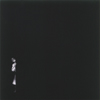 In 1989, Christoph Heemann and Edward Ka-Spel decided to embark upon a tape-exchange project in hopes of creating "atmospheric/textural music." The duo soon enlisted several other talented folks from H.N.A.S. and the Legendary Pink Dots milieu and recorded an album's worth of raw material, which Heemann himself then combined, edited, and mixed into what became the band's debut. Ka-Spel has since stated that Mimir was a bit of a disappointment (though he liked the remixed version), as Heemann did not carve up the source material aggressively enough to realize their initial vision. Nevertheless, it seems they made an inventive and engrossing album despite themselves. This might be their best release.
In 1989, Christoph Heemann and Edward Ka-Spel decided to embark upon a tape-exchange project in hopes of creating "atmospheric/textural music." The duo soon enlisted several other talented folks from H.N.A.S. and the Legendary Pink Dots milieu and recorded an album's worth of raw material, which Heemann himself then combined, edited, and mixed into what became the band's debut. Ka-Spel has since stated that Mimir was a bit of a disappointment (though he liked the remixed version), as Heemann did not carve up the source material aggressively enough to realize their initial vision. Nevertheless, it seems they made an inventive and engrossing album despite themselves. This might be their best release.
When Mimir was first released on Flabbergast 1990, it had a wildly different sequence than the one that ultimately emerged after Christoph Heemann spent an entire year re-editing it for its 2007 reissue.Despite the enormous amount of time and effort expended, however, the actual musical content did not change too much, aside from the conspicuous removal of the chanted introduction to "Air." Taken as a whole, the current version should sound quite familiar in all major respects to anyone who has the original version, as the same motifs unfold in roughly the same order.Taken on a song-by-song basis, however, the 2007 Mimir is an entirely a different (and better) experience, condensing the original nine pieces into a mere five (yet somehow growing a few minutes in length).
Christoph's remix is an impressive feat on a number of levels.For one, Heemann took something relatively straightforward and digestible and gutsily transformed it into something more difficult, but ultimately more rewarding.The opening piece on the 1990 album ("Entrance") is essentially a very likable, vaguely Asian-sounding guitar figure bolstered by some artfully warped keyboards and flutes.In the 2007 version, that same guitar motif gradually unfolds into thick, swoopingly psychedelic analog synths and a melancholy piano and violin coda over the course of an epic 24-minute running time.What once felt like three separate good ideas compartmentalized into three separate works now feels like one immersive plunge into (and re-emergence from) a rabbit hole of fractured, mind-bending weirdness.
After that mesmerizing opening salvo, Mimir could've ended and I would have been completely content.The album continues on for another 18 minutes though, growing quite a bit more abstract and unfolding in a vaguely menacing and surreal fashion.I actually prefer the more focused and melodic side of Mimir (which I believe runs counter to Heemann and Ka-Spel’s own preferences), but there are a number of wonderful passages that emerge amidst the constantly shifting drones and treated field recordings that follow.Also, the band has a fairly unique and unpredictable take on ambient music, informed by a healthy interest in musique concrète and tape loop experiments.My favorite moments are the warm, shimmering ambiance that begins "Curtain/December 3, 1989" and the ugly psychedelia of "December 2, 1989/Air," which sometimes sounds like a whinnying demon horse from the bowels of hell.I also prefer the more organic and "human" side of Mimir on display here, which almost vanished entirely with 1993's Mimyriad.Mimir deftly balances Ka-Spel and Silverman’s spacier, more artificial sounds with a host of recognizable instruments like flute, violin, and kalimba, though Andreas Martin’s guitar playing is still woefully under-represented.
Being a serious artist means being in a state of constant evolution.Consequently, there are probably very few active musicians who are able to look back on their work from nearly two decades ago without cringing and making some rather harsh internal criticisms.Christoph Heemann is somewhat unique in his inability to ignore those feelings and has (on more than one occasion) gone back to fix his earlier mistakes and make the album he felt he should've made the first time around. He might get a bit too fixated on details that no one will notice except for him and his collaborators, and he might make some decisions that I find baffling (like keeping the electric guitar noodling in "Smashed"), but it is very refreshing to know that he deeply cares about what he is putting out.Mimir might not have been quite realized Heemann's original vision for this project, but his personal failure inadvertently makes for a pretty great album, as the music clearly took on a life of its own.Mimir is a rather singular entity—a sort of self-detonating, post-modernist supergroup.Having this many talented and odd people working together can't help but result in some excellent music, but that natural cohesion is at odds with Ka-Spel and Heemann's perverse tendencies to deconstruct, subvert, and confound.This time around, the chemistry won.
(The song titles embedded in the 2007 Streamline CD are wrong.The correct track listing is available here.)
Samples:
 
Read More

